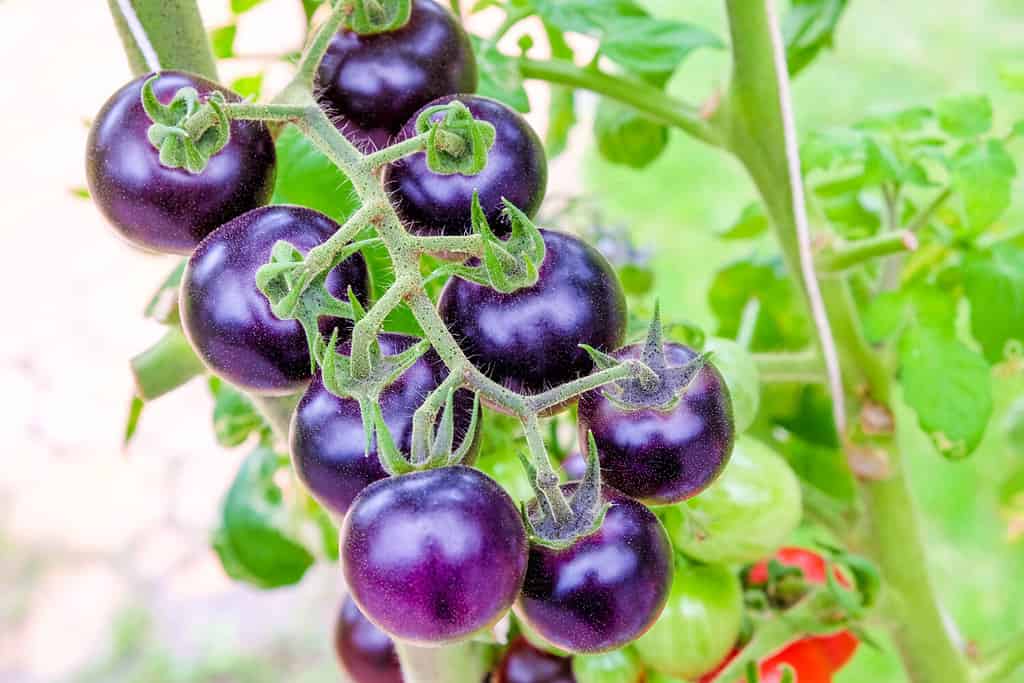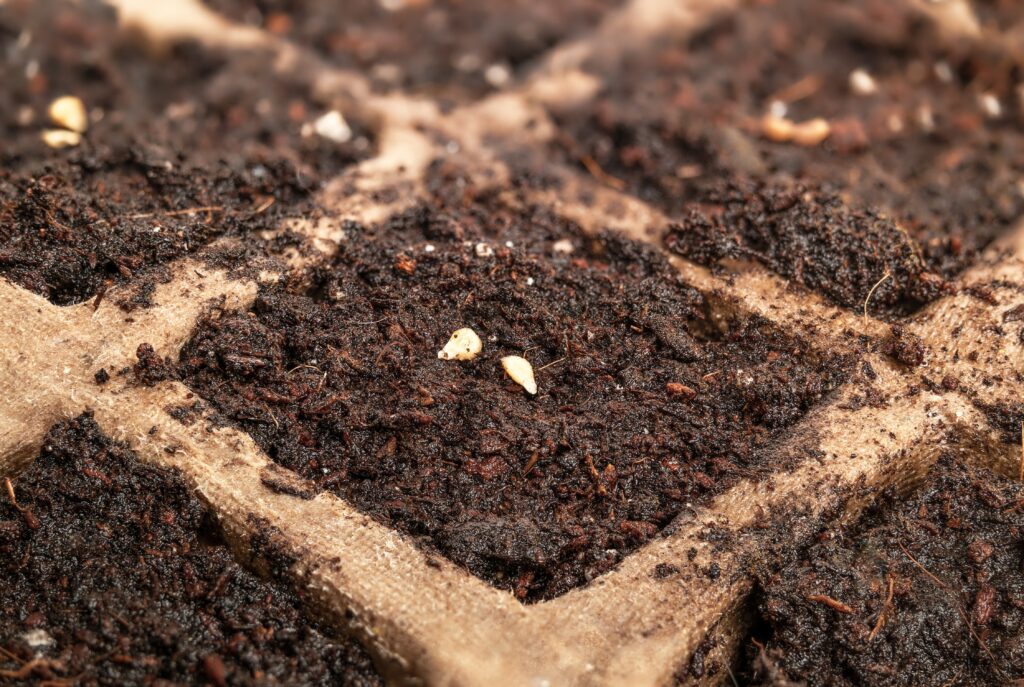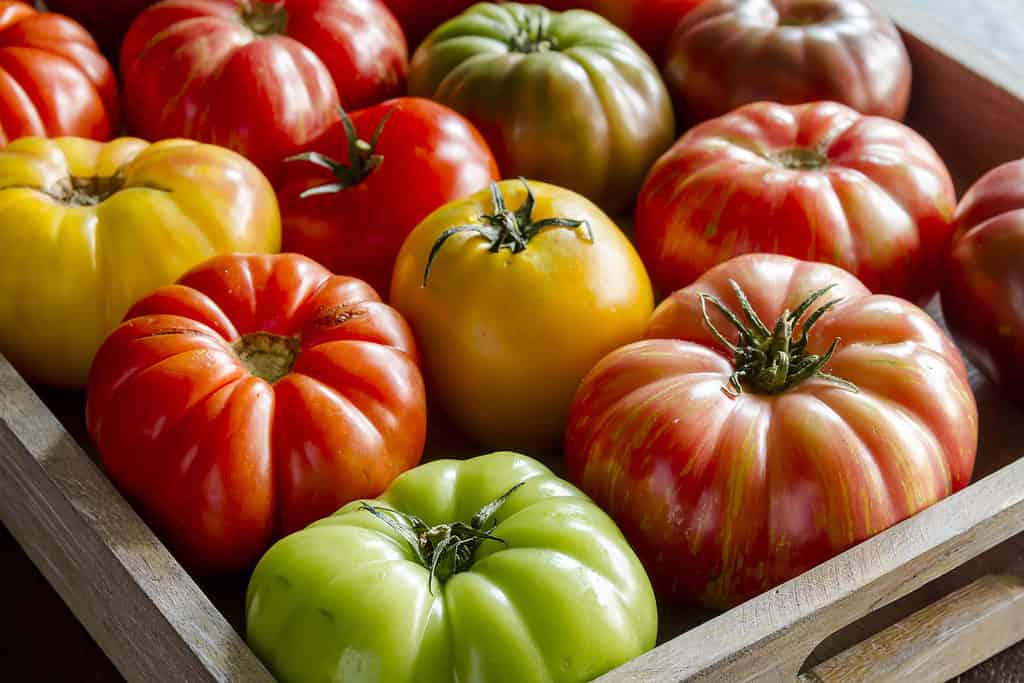Welcome to our blog post on growing tomatoes in Oklahoma! If you’re an avid gardener or just starting out, this article will provide you with essential information and helpful tips for successfully cultivating delicious tomatoes in the diverse climate of Oklahoma. Whether you have a spacious backyard garden or are limited to container gardening, we’ve got you covered. From ideal timing for planting to expert advice on nurturing your tomato plants throughout their growth cycle, we aim to equip you with all the knowledge needed to achieve bountiful harvests year after year. So get ready to roll up your sleeves and dive into these 15 invaluable tips that will ensure your tomato plants thrive in the great state of Oklahoma!
Gardening in Oklahoma

Oklahoma is a beautiful state with four different seasons.
©Silvio Ligutti/Shutterstock.com
The climate in Oklahoma can vary drastically from season to season and, as such, can have a great impact on vegetable gardening. Overall, the climate in Oklahoma can have a big impact on vegetable gardening. While the hot, dry summer months can make it difficult to grow certain vegetables, the spring and fall months provide the perfect environment for growing a variety of vegetables. With proper planning and diligent care, you can have a successful and fruitful vegetable garden in Oklahoma.
Spring
In the spring, Oklahoma experiences mild temperatures and plenty of sunshine, which makes it the perfect time to start vegetable gardening. The average temperature in April and May is between 60-70 degrees Fahrenheit, making it an ideal climate for growing a variety of vegetables. Rainfall is also fairly abundant during this season, so you don’t have to worry about watering your garden too often.
Summer
As summer rolls around, the temperatures in Oklahoma start to soar. The average temperature in June, July, and August ranges between 85-95 degrees Fahrenheit, with July being the hottest month. While these conditions are conducive to growing warm-season vegetables such as tomatoes, peppers, and squash, it is much harder to grow cool-season vegetables such as lettuce and kale. Hot, dry conditions can also lead to water stress and disease in your vegetable garden, so it is important to be vigilant with watering and pest control.
Fall
When fall arrives, temperatures in Oklahoma start to cool down, making it the ideal season for planting cool-season vegetables. The average temperature in September, October, and November is between 60-70 degrees Fahrenheit, making it the perfect climate for planting leafy greens and root crops. The rainfall in this season is also fairly consistent, so you don’t have to worry about watering your garden too often.
Growing Tomatoes in Oklahoma

Growing your own tomatoes in Oklahoma is a very rewarding and tasty experience.
©jadimages/Shutterstock.com
Tomatoes need well-draining, nutrient-rich soil to thrive. If you’re planting in an existing garden bed, a good soil amendment would be to mix in some compost. If you’re starting a new bed, mix in organic matter like aged manure, compost, or peat moss.
Popular tomato varieties that do well in Oklahoma include Celebrity, Big Boy, and Roma. Heirloom varieties are also popular and do well in the state. As an alternative, cherry tomatoes are a great choice for those with limited space.
The best place to plant your tomatoes is in a sunny spot that receives at least 6 hours of direct sunlight per day. If possible, choose an area that is sheltered from strong winds. Tomatoes also prefer warmer soil, so it’s best to wait until the soil has warmed up before planting.
It’s recommended to plant at least three tomato plants per person. If you have a large family, you may want to plant more plants. Be sure to space them out to allow for adequate airflow and light.
Timing: When to Plant Tomatoes in Oklahoma

One of the best parts of growing your own tomatoes is trying out new exotic varieties.
©Nattapol_Sritongcom/Shutterstock.com
Tomatoes are a popular vegetable in Oklahoma, both for home gardens and commercial production. By knowing when to plant tomatoes in Oklahoma, you can maximize your yields and get the most out of your garden. Planting live plants in the garden should be done in late spring or early summer, planting seeds in the garden should be done in mid-summer, and starting plants from seed early indoors should be done approximately 6 to 8 weeks before the last spring frost. Following these tips will ensure that your tomatoes thrive in Oklahoma.
When to Plant Live Plants in the Garden

Tomatoes grow surprisingly well in deep containers and pots.
©AngieC333/Shutterstock.com
For the best results, wait to plant live tomato plants in the garden until late spring or early summer. This will help ensure the plants do not become stunted due to cold temperatures or frost. Plant the tomato plants when the soil temperature is around 65°F. Depending on the variety, tomatoes will need to be spaced at least 18 to 24 inches apart.
When the weather is warm, and the soil temperature is at least 60°F, it’s time to start planting live tomatoes in the garden. In southern Oklahoma, this usually happens around April 5th and by April 25th in northern Oklahoma. Any temperatures lower than 50°F can slow down the growth of the tomatoes.
When to Plant Tomato Seeds in the Garden

If you want to plant tomato seeds directly in the garden, wait until the soil is nice and warm first.
©sophiecat/Shutterstock.com
If you prefer to plant tomato seeds directly in the garden, the best time to do so is after the soil temperature is above 65 degrees Fahrenheit. This is when the soil is warm enough for optimal germination. Tomato seeds require constant temperatures between 65-85 in order to sprout. You can help warm the soil faster by covering it in black plastic for a few days. The seeds will take about 6-8 days to germinate if you keep them moist. Make sure to sow the seeds at least 1/2 inch deep and spaced 18 to 24 inches apart.
When to Start Tomatoes from Seed Indoors
If you want to get a jump start on your gardening season, you can start tomato seeds indoors. This is best done 6 to 8 weeks before the last spring frost. Again, the spring frost dates are April 5th in the south and after April 25th in the north. Sow the seeds in individual pots or trays and keep the soil moist. Once the seedlings have grown to a few inches tall, they can be transplanted outdoors.
When to Harvest Tomatoes in Oklahoma

Cherry, grape, and pear tomatoes are ready to harvest a few weeks before their large counterparts.
©YuRi Photolife/Shutterstock.com
If you planted tomatoes from seed, they will be ready 65-85 days later. If you planted live plants out in the garden, the tomatoes are ready to harvest 40-50 days later. You can also count the days from when the tomatoes first appear, as they are usually ripe 20-30 days later.
Knowing when to harvest your tomatoes is essential to enjoying the full flavor and texture of the fruits. When the tomato has filled out its shape and has a nice, deep red color, it is ready to be picked. In addition, the tomato should feel firm but give slightly when gently squeezed. Some varieties may have a lighter shade of red when ripe, so be sure to check the variety you are growing for ripeness.
The proper method for harvesting a tomato is to gently twist the stem away from the plant, taking care to avoid damaging the plant. Once the fruit is removed, the stem should be left intact. Be sure to take care when harvesting your tomatoes, as they can be delicate. With the proper handling, you can enjoy the deliciousness of a ripe tomato for many months to come!
How Weather Can Impact Tomato Growth
Weather plays a key role in the growth of tomatoes. Changes in temperature, rain, sunlight, and humidity can all have a dramatic impact on the amount and quality of tomatoes that are grown.
When temperatures are too hot, tomatoes can become sunburnt and wilted. During times of extreme heat, tomatoes may not be able to absorb the necessary nutrients from the soil, leading to smaller yields.
On the other hand, temperatures that are too cold can slow down the growth of tomatoes, leading to fewer fruits. Cold temperatures can also cause the plants to become stressed, leading to disease and other issues.
Rainfall is also important for the growth of tomatoes. Too much rain can lead to flooding and disease, while too little can cause drought-like conditions. Too much water can also leach away essential nutrients from the soil, resulting in stunted growth.
Sunlight is another critical factor for tomato growth. Tomatoes need at least 6 hours of direct sunlight a day to produce healthy yields. Too little sunlight can lead to pale fruit, while too much can cause sunburn.
Finally, humidity can also have an impact on tomato growth. Too little humidity can cause wilting, while too much can cause leaves to yellow and curl.
15 Helpful Tips for Oklahoma Gardeners Who Want to Grow Tomatoes

Heirloom tomatoes contain vitamins A and C, beta-carotene, calcium, and fiber.
©Teri Virbickis/Shutterstock.com
- Choose tomato varieties that are well-suited to Oklahoma’s climate. Sun Gold, Jolly Elf, Plum Crimson, Better Boy, and Celebrity are all cultivars that are well suited to the Oklahoma climate.
- Plant tomatoes in an area that receives full sun for at least 8 hours a day.
- Prepare the soil by adding organic matter such as compost or aged manure.
- Plant tomatoes in raised beds or containers to improve drainage.
- Plant tomatoes at the same depth as they were in the nursery pot or even deeper. They will grow roots along the buried stems.
- Space tomato plants two to three feet apart.
- Mulch around the plants to conserve moisture and keep the soil temperature more consistent.
- Water thoroughly and regularly, but avoid getting the leaves wet.
- Pinch off the first set of flowers to help the plant develop a strong root system.
- Prune off any diseased or dead foliage.
- Place stakes or cages around the plants to provide support.
- Use a balanced fertilizer when the plants are about six inches tall and then again when they start to flower.
- Check the plants regularly for pests and diseases.
- Harvest tomatoes when they are ripe and still firm.
- Rotate the location of your tomato plants each year.
Thank you for reading! Have some feedback for us? Contact the AZ Animals editorial team.








